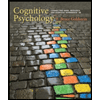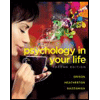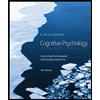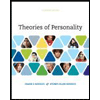
Introduction
A category represents all the possible characteristics and examples of a particular concept/thing. For instance, a guitar can have different categories, such as acoustic or electronic. The process of categorization involves the distribution of things into different categories.
Explanation of Solution
Answer and explanation
In everyday life, humans tend to cognitively allocate things into different categories for the sake of effortless comprehension of the world. It is for this reason that categories are also known as the pointers to knowledge. Categories allow humans to differentiate between things based on their different characteristics. For instance, painting can have different types, and each type has different characteristics, such as expressionism, impressionism, pointillism, and realism.
The categorization of objects helps an individual to function in daily life by recognizing the things they utilize on a daily basis. One knows how to make tea because of the understanding of different ingredients and their properties. This allows them to know what utensil to use, how to turn on the gas stove, what ingredients are needed, and so on.
Categorization also promotes diversity. It allows individuals to choose something they like from a number of different things based on their likes and dislikes. For instance, music has several different categories, and a person may try listening to different types of music before they decide the one they like the most.
Want to see more full solutions like this?
Chapter 9 Solutions
COGNITIVE PSYCHOLOGY: CONNECTING MIND, R
- can you make me a a spps box plot that has all the data 1- through 67 that has age,ethencity, person 2 is person attractive with tattoss and queston 13 is attractive without tattoosarrow_forwardI need you to make a box plot on SPSS using age, ethnicity, person 2 is people attractive with tatoos an person 13 is people attractive without tattosarrow_forwardCan you help me find 20 peer review article on psychology evolutinary&culturalarrow_forward
- Does this article have to do with evolutionary psychology & cultural https://www.cambridge.org/core/journals/ageing-and-society/article/views-and-experiences-of-adult-children-concerning-intergenerational-relationships-with-their-older-kin-a-qualitative-study-from-south-india/F71A9BA3F3FB27D16CE589E8885CFB53arrow_forwardWhat should the role of a school counselor be as it applies to Section 504 of the Rehabilitation Act of 1973? Write in a narrative format and include in the in-text citations of the following source: “American School Counselor Association. (2024). The school counselor and Section 504 plan and process. https://www.schoolcounselor.org/Standards-Positions/Position-Statements/ASCA-Position-Statements/The-School-Counselor-and-Section-504-Plan-and-Proc “arrow_forwardWhat role do you think social media has on the occurrence of domestic violencearrow_forward
- can you help make a factor ANOVA on SPSS the data I need is the age, ethnicity and all 8 questions which are 1.How likely are you to adopt new trends or practices that are considered unconventional or unorthodox in your culture or society? 2.To what extent do you feel the need to be different or unique in your choices, behaviors, or appearance? 3. How often do you find yourself drawn to subcultures or groups that reject mainstream values? 4. How important is it for you to express your individuality, even when it means going against social or cultural expectations? 5. To what degree do you enjoy challenging social norms or questioning authority figures? 6.How Important is it to you to be different or unique in your choices, behaviors, or appearance? 7. How often do you engage in behaviors or make choices that are perceived as unconventional or rebellious? 8. How comfortable are you with being judged or criticized for your nontraditional beliefs or actions?arrow_forwardI need help making a spss box plot using the data age, gender, ethnicity, and person 1 to person 20 https://docs.google.com/spreadsheets/d/1V582jSoi5i4-jfxGxmS4O6kydNtWbMFIDNJ1u7RfpPk/edit?usp=sharingarrow_forwardOut of these questions, which of these questions would match with the predictor: one preference for nonconformity predicator 2 social influence, environmental effects? questions 1. How likely are you to adopt new trends or practices considered unconventional or unorthodox in your culture or society? 2. To what extent do you feel the need to be different or unique in your choices, behaviors, or appearance? 3. How often do you find yourself drawn to subcultures or groups that reject mainstream values? 4. How important is it for you to express your individuality, even when it means going against social or cultural expectations? 5. To what degree do you enjoy challenging social norms or questioning authority figures? 6.How Important is it to you to be different or unique in your choices, behaviors, or appearance? 7.How often do you engage in behaviors or make choices that are perceived as unconventional or rebellious? 8.arrow_forward
- I need help doing an SPSS box blot on age, gender, and people 1 through people 20arrow_forwardGough creative personality scale share your observations regarding how it felt to take the inventory, and whether you think it captures the concepts it is attempting to measure.arrow_forwardMiddle Childhood is the period between 7 years old and 11 years old. Middle childhood can be a difficult time for children and parents to navigate. “Dear Abby” used to be an advice column where people would write in and ask for help with various situations/problems in their life. A modern day slightly similar equivalent would be Reddit’s popular thread including a NSFW term. Your task is to identify two “problems/dilemmas” caregivers of a child in middle childhood may encounter and give advice based on the research in child development. This is not just your opinion; this needs to be backed up with empirical evidence.arrow_forward
 Ciccarelli: Psychology_5 (5th Edition)PsychologyISBN:9780134477961Author:Saundra K. Ciccarelli, J. Noland WhitePublisher:PEARSON
Ciccarelli: Psychology_5 (5th Edition)PsychologyISBN:9780134477961Author:Saundra K. Ciccarelli, J. Noland WhitePublisher:PEARSON Cognitive PsychologyPsychologyISBN:9781337408271Author:Goldstein, E. Bruce.Publisher:Cengage Learning,
Cognitive PsychologyPsychologyISBN:9781337408271Author:Goldstein, E. Bruce.Publisher:Cengage Learning, Introduction to Psychology: Gateways to Mind and ...PsychologyISBN:9781337565691Author:Dennis Coon, John O. Mitterer, Tanya S. MartiniPublisher:Cengage Learning
Introduction to Psychology: Gateways to Mind and ...PsychologyISBN:9781337565691Author:Dennis Coon, John O. Mitterer, Tanya S. MartiniPublisher:Cengage Learning Psychology in Your Life (Second Edition)PsychologyISBN:9780393265156Author:Sarah Grison, Michael GazzanigaPublisher:W. W. Norton & Company
Psychology in Your Life (Second Edition)PsychologyISBN:9780393265156Author:Sarah Grison, Michael GazzanigaPublisher:W. W. Norton & Company Cognitive Psychology: Connecting Mind, Research a...PsychologyISBN:9781285763880Author:E. Bruce GoldsteinPublisher:Cengage Learning
Cognitive Psychology: Connecting Mind, Research a...PsychologyISBN:9781285763880Author:E. Bruce GoldsteinPublisher:Cengage Learning Theories of Personality (MindTap Course List)PsychologyISBN:9781305652958Author:Duane P. Schultz, Sydney Ellen SchultzPublisher:Cengage Learning
Theories of Personality (MindTap Course List)PsychologyISBN:9781305652958Author:Duane P. Schultz, Sydney Ellen SchultzPublisher:Cengage Learning





